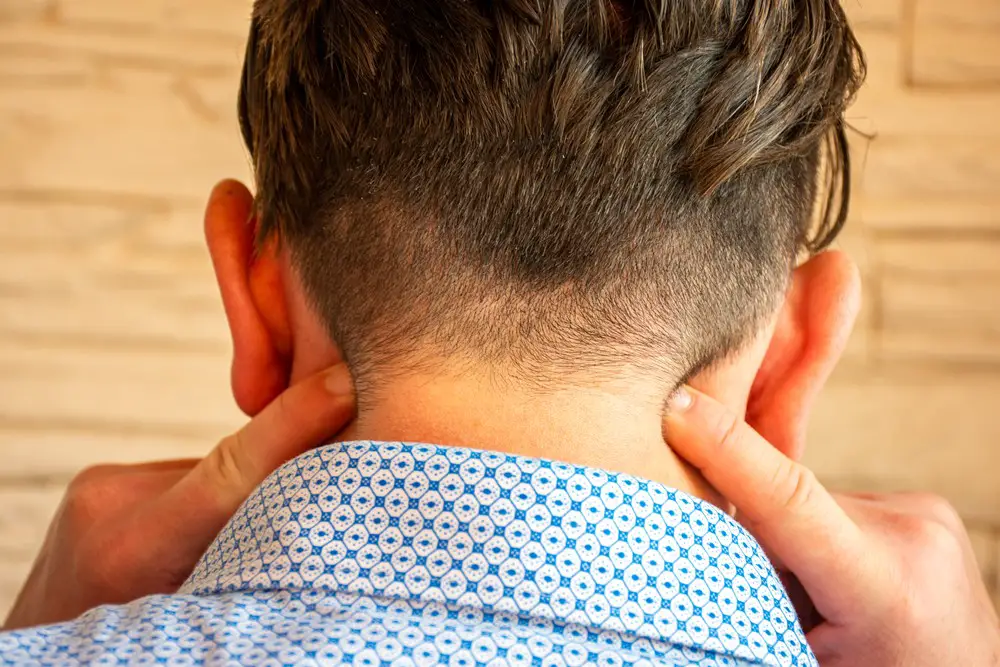Occipital neuralgia, a condition that affects the back of the head and neck, is notorious for causing sleep disturbances. Pain and discomfort from this condition often make finding a comfortable sleeping position challenging. Consequently, occipital neuralgia patients often struggle to achieve restful and restorative sleep. This article aims to provide insight into the best ways to sleep with this condition, ensuring better sleep quality and overall well-being.
Occipital neuralgia results from irritation or injury to the occipital nerves, which provide sensation to the top and back of the head. The condition can arise from various factors, ranging from trauma and inflammation to pre-existing medical conditions such as diabetes. Understanding the condition and its underlying causes is important to address sleep challenges associated with occipital neuralgia.
Many people with occipital neuralgia find relief by adjusting their sleeping environments, positions, and routines. Sometimes, making just a few simple changes can significantly improve sleep quality. This article will cover various treatment options, ideal sleeping positions tailored for those with occipital neuralgia, and possible lifestyle shifts to help alleviate discomfort and prevent exacerbation.
Key Takeaways
- Identify the best sleeping position tailored to address occipital neuralgia discomfort.
- Explore various treatment options aimed at managing symptoms for improved sleep.
- Consider lifestyle changes for prevention and alleviation of occipital neuralgia pain.

Occipital Neuralgia Overview
Occipital neuralgia is a rather bothersome condition that affects the occipital nerves. These nerves run from the top of the spinal cord up through the scalp, and they’re a crucial component in the body’s ability to feel sensations in the neck and back of the head. When inflammation occurs in these nerves, it can result in a painful disorder characterized by sharp, electric shock-like sensations in the neck, head, and even behind the eyes.
It’s important to note that occipital neuralgia isn’t an everyday ailment everyone will encounter. It can be rare, often triggered by various factors, including muscle tension, previous injuries, or birth defects. It is essential to recognize that each person’s experience with this condition can vary significantly.
One of the critical aspects of managing occipital neuralgia is ensuring a proper sleeping position. Since the neck and occipital nerves are close buddies, poor alignment or additional stress on them can intensify the pain and discomfort experienced during the night.
It’s widely understood that sleep is crucial for an individual’s overall well-being. Unfortunately, occipital neuralgia can make getting a good night’s rest a seemingly insurmountable challenge. On the bright side, several tips and techniques can alleviate some of the pain and strife associated with this pesky problem.
To ensure that folks with occipital neuralgia can rest easy, this article will cover some of the best ways to adjust one’s sleeping habits, as well as various remedies and lifestyle changes that can contribute to an overall improvement in quality of life. After all, a peaceful night’s sleep can be a game-changer in battling the discomfort of occipital neuralgia!
Causes of Occipital Neuralgia
Occipital neuralgia, a severe headache, can be quite debilitating for those who experience it. Understanding the underlying causes can help in both prevention and treatment. This section will delve into the various factors contributing to occipital neuralgia development.
Injury to the neck or head is one possible culprit of occipital neuralgia. Accidents, such as whiplash or a blow to the head, can damage the nerves in the area, leading to debilitating headaches. Arthritis, both osteoarthritis and more general forms, can also contribute to occipital neuralgia, as it causes inflammation and degeneration of the spine, which may affect the occipital nerves.
Speaking of inflammation, gout, a type of inflammatory arthritis, can also play a role in causing occipital neuralgia. The accumulation of uric acid crystals around the joints can also spread to the area around the occipital nerves, leading to intense pain.
A blood vessel inflammation or an infection in the area surrounding the occipital nerves could also be the root cause of occipital neuralgia. These conditions may cause swelling that puts pressure on the nerves, resulting in symptoms like a sharp, stabbing pain.
Diabetes is known for causing nerve damage, which could extend to the occipital region. Diabetic patients must be extra cautious, as uncontrolled blood sugar levels may contribute to the occurrence of occipital neuralgia.
Tension headaches and pinched nerves can be easily confused with occipital neuralgia, as they share many similar symptoms. For instance, a pinched nerve in the neck may cause pain radiating to the occipital region. However, proper diagnosis can help differentiate between these conditions and ensure appropriate treatment is pursued.
In summary, occipital neuralgia can stem from numerous sources, such as injury, arthritis, diabetes, gout, pinched nerves, tension headaches, blood vessel inflammation, and infections. Understanding these causes can aid in preventing and treating this painful condition, allowing sufferers to regain control over their lives and experience relief from their symptoms.

Symptoms and Diagnosis
As you may know, occipital neuralgia is a condition in which the occipital nerves become inflamed or irritated. This can lead to excruciating neck pain and a throbbing sensation at the back of the head. The pain can even radiate to the forehead and behind the eyes and sometimes cause severe headaches.
People suffering from this condition might also experience light sensitivity, vertigo, dental pain, and scalp tenderness. Numbness, muscle tightness, and a burning sensation are also common symptoms. Now, one might wonder, how is it diagnosed? Let’s delve into that.
Diagnosis of occipital neuralgia involves a thorough physical examination by a healthcare professional. They will look for tenderness in the area and examine the blood vessels. Often, they will press on the occipital nerves to check for pain response, indicating the potential origin. Sometimes, temporary relief from a nerve block can hint at a positive diagnosis.
Since the symptoms can be similar to other conditions, healthcare professionals must rule out other potential causes. Careful evaluation is crucial because only then can they confidently prescribe a proper treatment plan.
So, if you or a loved one are experiencing the symptoms mentioned above, don’t hesitate to consult a healthcare professional. Early diagnosis can significantly improve the chances of effectively managing and living with occipital neuralgia.
Treatment Options
Medications
Occipital neuralgia can be quite a challenge to manage. Fortunately, doctors often prescribe a variety of medications to alleviate the discomfort. Some common options include:
- Anti-inflammatory drugs, which help reduce inflammation and provide pain relief.
- Muscle relaxants to help ease muscle tension around the affected nerve.
- Anticonvulsants may also be effective, especially in cases where patients experience symptoms similar to migraines.
- Topical medications can be applied directly to the painful area for targeted relief.
Always consult a healthcare professional before starting a new medication, and discuss any potential side effects or interactions with other medications you may be taking.
Nerve Blocks and Injections
A nerve block or injection could be a ticket for more immediate relief. An occipital nerve block typically involves a steroid injection or a mixture of local anesthetics and steroids. These can offer a significant reduction in pain and discomfort. Furthermore, botulinum toxin injections have also shown promise in relieving occipital neuralgia.
Keep in mind that injections usually require repeat procedures to maintain their effectiveness. It’s best to work closely with a pain management specialist to determine the best action.
Physical Therapy and Exercise
Physical therapy and regular exercise can be crucial in managing occipital neuralgia. Through a personalized therapy plan, patients can learn how to:
- Improve posture and neck alignment
- Stretch and strengthen muscles around the occipital nerves
- Incorporate relaxation techniques to reduce tension
Engaging in light exercises, such as walking or swimming, can promote overall well-being and contribute to better pain management. Always consult a physical therapist or doctor before starting any new exercise regimen.
Alternative Therapies
In addition to conventional medical treatments, some individuals have found relief through alternative therapies. Options like acupuncture, massage, and biofeedback can provide additional support in managing occipital neuralgia symptoms. However, it is essential to consult your healthcare provider and consider these therapies complementary to your primary treatment plan.
Each person’s experience with occipital neuralgia is unique. Exploring the available traditional and alternative treatment options allows for a tailored approach to finding the relief they need. Patience is key; finding the right treatment may take trial and error.
Best Sleeping Position for Occipital Neuralgia
Ah, sleep! It’s the most rejuvenating part of our daily routine. Although, when living with occipital neuralgia, catching those precious Zs can be quite a challenge. No need to worry, as there are some tried-and-true ways to help you find relief during slumber.
Firstly, let’s talk about pillows – not just any kind, but specialty pillows designed for proper alignment. These headrests are the cradles of comfort and, more importantly, can provide much-needed support for the back of your head. You should seriously consider investing in a high-quality pillow with contoured cervical memory foam, as it’ll sculpt itself to the curves of your neck and head, reducing pressure on the nerves causing the discomfort.
Now that we’ve got that covered, it’s time to address the big question: what’s the ideal sleeping position for someone with occipital neuralgia? Here’s the secret – sleeping on your back or supine position can make a difference. This position aids in maintaining the natural curve of your spine and allows your neck muscles to relax, thus easing nerve tension. And guess what? That specialty pillow we just mentioned will be handy, as it’ll encourage your neck to remain in that proper alignment throughout the night.
Of course, your bed plays a starring role too! Your mattress should be a haven of comfort, offering the perfect blend of support and plushness. A medium-firm mattress may work wonders for you, as it balances spinal alignment and pressure relief. You know what they say, “you snooze, you…win!” at least when picking the right mattress.
Well, there are a few simple yet game-changing tips to make sleeping with occipital neuralgia more manageable. Remember, a supportive pillow and mattress, combined with the supine position, will help ease the strain on those pesky nerves. Sweet dreams!
Lifestyle Changes and Prevention
Living with occipital neuralgia can be challenging, but luckily, several lifestyle changes and preventative measures can alleviate neck pain and improve your quality of life. Let’s dive into some helpful tips that can make a difference.
For starters, paying attention to your neck muscles is crucial. Doing gentle exercises and stretches can help relieve tight muscles and lessen the pressure on the lesser and greater occipital nerves. Yoga and chin tucks promote flexibility and strength in the neck region.
Furthermore, managing pain can be tackled by incorporating heat and ice therapy. A cold pack or hot shower can help relax tense muscles and alleviate neck pain. You should also consider over-the-counter medications such as ibuprofen to reduce inflammation and provide temporary relief.
Another critical aspect is your sleep environment. Ensure you have a supportive pillow and a comfortable position to prevent neck injury and sleep deprivation. Adjusting your laptop or workstation to an ergonomic setup can also make a tremendous difference by easing the strain on the spinal column.
In addition, exploring various relaxation techniques can aid in easing chronic pain. Deep breathing, meditation, and other stress-reducing practices can be beneficial in promoting overall well-being. Taking care of your mental health is as important as addressing the physical aspects of occipital neuralgia.
Lastly, don’t hesitate to seek professional help. A neurologist, chiropractor, or massage therapist can assist in dealing with occipital neuralgia. Chiropractic care and massage therapy can help tackle muscle tightness, while a neurologist can assess blood vessels and spinal function in severe neck pain cases.
Remember, these changes and prevention methods can significantly impact your neck pain and overall quality of life. Stay confident and proactive in your approach; you’ll likely notice improvements sooner than you think.
Frequently Asked Questions
What is the optimal sleeping position for occipital neuralgia?
Ah, the million-dollar question! The optimal sleeping position for occipital neuralgia is typically on your back. This position allows for the most natural spine and neck alignment, minimizing nerve compression. Moreover, it reduces the pressure on tender points, giving you a better chance of a painless night’s sleep.
How can I adjust my pillow to alleviate occipital neuralgia pain while sleeping?
The right pillow adjustment can be a game-changer! Consider using specially designed neck support pillows or cervical rolls that fit the contour of your neck, enhancing comfort and support. Placing a smaller pillow or rolled-up towel under your neck while cradling the head in a larger pillow can also alleviate pressure on the occipital nerves.
Which type of mattress helps alleviate occipital neuralgia symptoms?
Finding a balance between comfort and support is important when choosing the ideal mattress. Medium-firm mattresses are the crowd favorite for people with occipital neuralgia, as they provide adequate support for the spine without sacrificing comfort. However, experiment with different firmness levels to find your sweet spot.
How do relaxation techniques aid in sleeping with occipital neuralgia?
Relaxation techniques – a true gift to the stressed and sleepless! They help by releasing tension in the muscles and calming the mind. Techniques like deep breathing, progressive muscle relaxation, and mindfulness meditation have shown immense potential in improving sleep quality for those with occipital neuralgia. The best part? They’re all-natural and can be practiced without any special equipment!
Are there any recommended sleep aids for people suffering from occipital neuralgia?
When counting sheep doesn’t cut it, sleep aids might come to the rescue! Over-the-counter options like melatonin and valerian root can help promote sleep. However, if you’re considering prescription sleep aids or have persistent symptoms, consulting a medical professional is a must. Remember, never self-prescribe or experiment without guidance!
What lifestyle changes should I consider to improve my sleep with occipital neuralgia?
Lifestyle changes – small but mighty tweaks that can work wonders! Adopting bedtime habits like maintaining a consistent sleep schedule, creating a cozy and quiet sleep environment, and avoiding stimulating activities before bedtime can significantly improve sleep quality. Don’t forget the basics: staying well-hydrated, incorporating regular exercise, and trying gentle neck stretches or massages to alleviate muscle tension. Small steps, big leaps!
- The Burnout Epidemic: Why We’re All Feeling Overwhelmed and How to Cope - February 9, 2024
- How to Live a Peaceful Life - February 9, 2024
- Useful Information You Should Know About Health Screenings - February 8, 2024
This site contains affiliate links to products. We will receive a commission for purchases made through these links.




